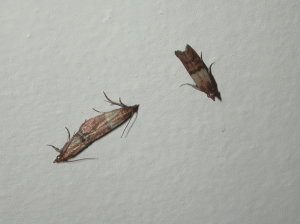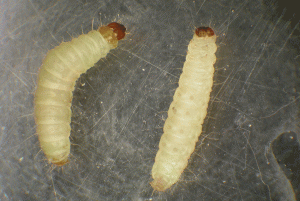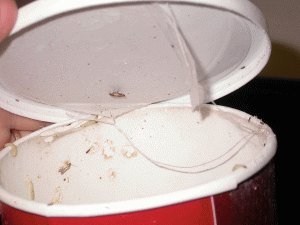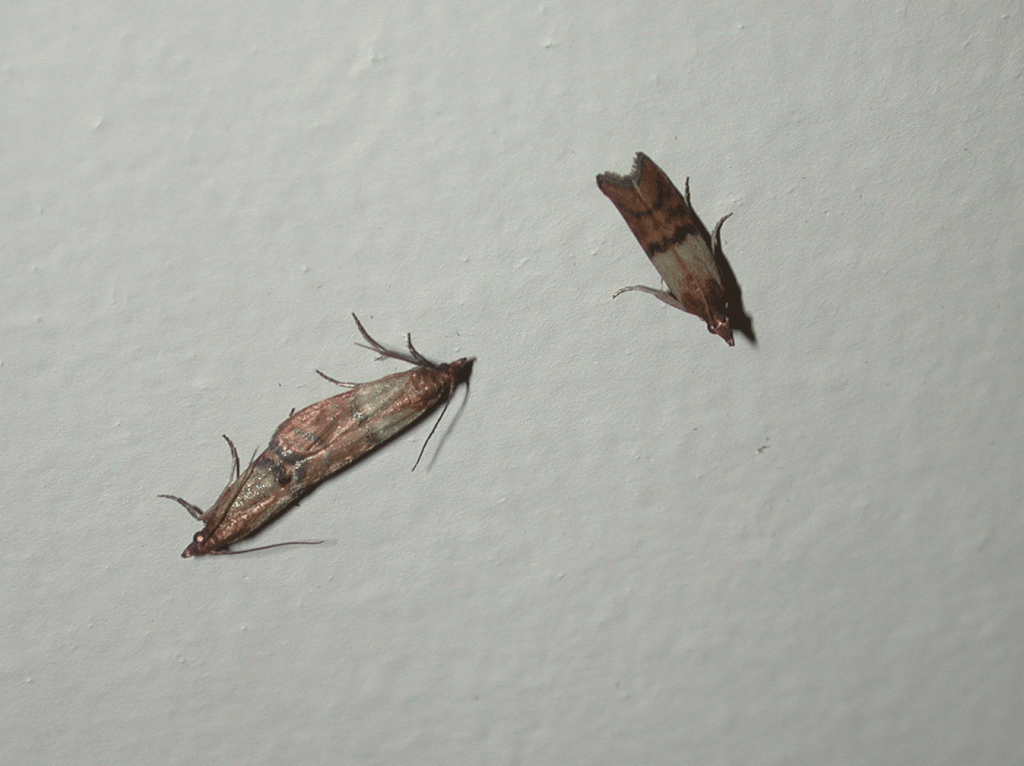Taken from the publication Stored Product Pests in the Home by Daniel R. Suiter, Michael D. Toews, and Lisa M. Ames, UGA Department of Entomology
Indianmeal moth

The Indianmeal moth, Plodia interpunctella, is the most common stored product pest in homes, where it infests bird seed, breakfast cereals, and other consumables. Indianmeal moths are most commonly found infesting food items in kitchen cupboards, but adults may be found throughout the home because they are excellent fliers and readily disperse from the food item they are infesting. Adults may be found well-away from the larval food source.
Adult Indianmeal moths are distinctive in appearance. Their wings are bi-colored, and alternate between beige and copper (Figure 1). Moths are most active at dusk, when they can be seen (indoors) flying while searching for mates and food. During the day, moths can be found resting motionless on walls and ceilings, often near their larval food source. Adults are shortlived and do not feed.
Indianmeal moth larvae, just before they pupate, are approximately 5/8 inch long, cylindrical, and dirty-white to a faint pink or green color (Figure 1B). Larvae produce visible silk webbing in the items they infest (Figure 1C) and generally pupate close to the items they are infesting. Just prior to pupation, larvae crawl away from their feeding site to pupate at the intersection of a ceiling and wall or similar seam within the cupboard, including spaces between walls and shelves and in the tight folds of packaging. Another favorite pupation site is between the corrugations of cardboard boxes. When looking for Indianmeal moths, inspectors should look between a product’s cardboard box and liner by lifting the liner out of the box.
See this information in the original publication here.


